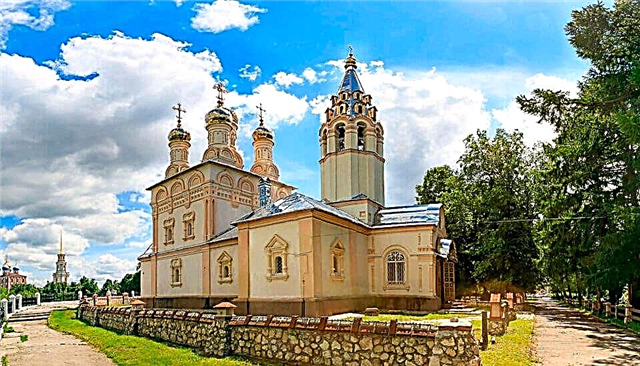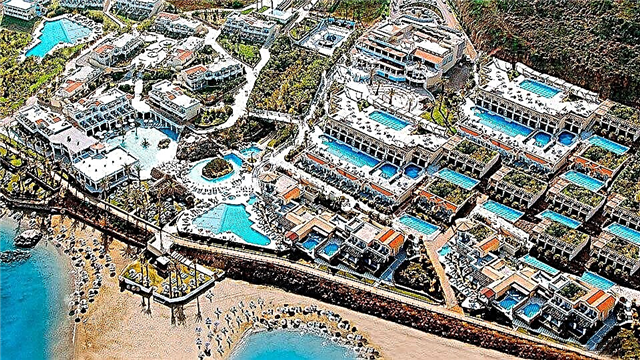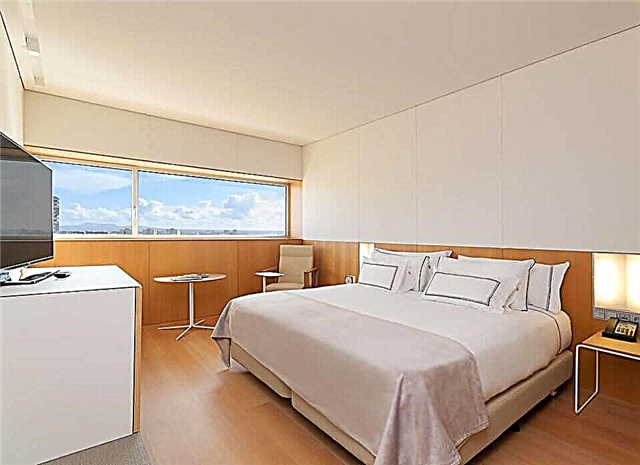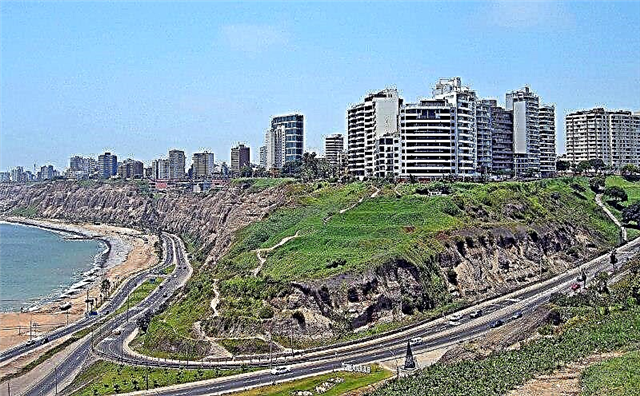Address: Russia, Moscow, Klimentovsky lane
Build date: 1720 year
Shrines: the ancient icon of Pope Clement of Rome and Peter the Archbishop of Alexandria, the ancient icon of St. Nicholas the Wonderworker, the ancient icon of the Most Holy Theotokos "Mammal", the icon of Clement of the Pope and St. Nicholas the Wonderworker, the icon of Clement of the Pope with the relics of a saint (large), the icon of Clement of the Pope of Rome with relics saint (small), an icon of the Cathedral of Holy Healers and Unmercenaries, an ancient icon of the Exaltation of the Cross of the Lord, an exact copy of the Turin Shroud on canvas, an ancient icon of the Last Judgment, icons of the Apostle Andrew the First-Called with a particle of relics, an ancient reliquary and the Gospel of the 18th century.
Coordinates: 55 ° 44'26.5 "N 37 ° 37'37.6" E
Content:
One of the most unusual cathedrals and temples in Moscow was consecrated in honor of the Primate of the Roman Catholic Church. The first wooden church on this site appeared at the turn of the XVI-XVII centuries, and the baroque church was built in 1720. The graceful domes and luxurious decor of the five-domed church resemble the beautiful palaces of St. Petersburg and the church in honor of St. Andrew the First-Called in Kiev.

Temple history
The area where the Church of Clement stands was called Zamoskovye or Zarechye since ancient times. From this part of Moscow, the road led to the Golden Horde. Along it settled those who fulfilled the will of the great Moscow prince in the Horde, and translators - "interpreters". Overseas guests brought a variety of goods to Zamoskvorechye. It was the merchants who founded the temple of Clement of Rome here - a saint who is revered both in Catholicism and in Orthodoxy.
During the reign of Tsar Ivan IV the Terrible, archers settled in Zamoskvorechye, and the Klimentovsky Ostozhets appeared. The wooden temple was marked on the first map of the city, drawn up in 1597. It is noteworthy that in 1612 the liberation of Russia from the Polish-Lithuanian invaders began from the Clement Church.
The stone church was built in 1657. It was small in size and had four thrones. When, at the end of the 17th century, young Peter I finally dealt with the archers, life in Moscow changed. Merchants began to dominate in Zamoskvorechye, so churches were built with merchant money. It is curious that this area of Moscow remained a merchant's area until the 1917 revolution.

In 1720, the Clement Church was rebuilt, then a bell tower and a refectory were added to it. By the middle of the 18th century, the foundation of the old church had become so dilapidated that, at the request of the parishioners, it was dismantled into stones.
Building a new church was expensive. The money for the temple was given by a rich merchant and parishioner - Kozma Matveyevich Matveev, who lived in a nearby estate. It is curious that Matveev was not just a wealthy entrepreneur. The eminent Moscow merchant had a high artistic taste and had connections with the Imperial Academy of Arts.
The beginning of construction coincided with the accession to the throne of the daughter of Peter I - Queen Elizabeth I. To mark this solemn event, the first stone was laid on the day of commemoration of the holy martyrs of Pope Clement and Peter, Archbishop of Alexandria.

The construction took eight years. By 1769, the new church was ready, and it was consecrated by the Moscow archpastor Ambrose. For the long-awaited opening, the merchant Matveyev donated a large bell to his native parish. According to the main throne in the documents, the temple began to be called the Preobrazhensky, but the people continued to call it Klimentovsky.
Inside the church, a magnificent carved iconostasis was installed, covered with red gold. In the sacristy were placed rare altar crosses, precious chandeliers, liturgical vessels and candlesticks made of silver, banners and old books in leather bindings. In the inventory, which was carried out in the 1770s in Moscow, the elegant church of St. Clement was recognized as one of the five best churches in the city.
Church in the XX century
In the first years of Soviet power, the parishioners' community and employees of the Central restoration workshops of the People's Commissariat of Education saved the temple as best they could. They made sure that the Klimentovskaya church was one of the first in Moscow to be included in the register of architectural monuments. However, in the new atheistic state, the fate of all Orthodox churches was not easy.

In 1922, after the decree on the seizure of church valuables came into force, the Clement Church was simply plundered. An armed detachment of expropriators confiscated from the sacristy all liturgical utensils of silver weighing 32 pounds 28 pounds. Only the essentials for services were left in the church, including old icons on the walls.
The Soviet state did not finance the repair of cult architectural monuments in any way, so the parishioners themselves collected money to maintain the building. Small cosmetic repairs were clearly not enough, and the old temple continued to decay.
In 1929, when the Soviet government began an active struggle against religion, the Clement Church was closed. They decided to preserve the solid stone building and adapt it for public needs. True, in the 1930s, a rare monument of Russian architecture - the entrance temple pavilion - was demolished, and most of the unique wrought-iron fence was destroyed.

Many Soviet organizations were eager to get a representative building in the very center of the city. Some suggested not to stand on ceremony and demolish the former church in order to set up a park for workers and arrange a kindergarten in its place. Through the efforts of the Committee for the Protection of Monuments of the All-Russian Central Executive Committee and the titanic efforts of I. Grabar and P. Baranovsky, the old building was again saved.
The stock book depository of the Lenin Library was placed inside the Clement Church. Of the 1.5 million storage units, half were books, which after the revolution were requisitioned from Orthodox monasteries and private collections of Moscow nobles and merchants.
In 1936, the temple even began to be restored, but the Great Patriotic War began, and it changed all plans. In the post-war years, the church and the area around it looked depressing. A public garden was laid out on the site of the old cemetery, and an underground public toilet was arranged in the center of the green zone.

In 2008, the Clement Church was finally returned to the faithful. The major restoration lasted five years. Then the interiors of the church began to be restored and old icons were restored. In September 2014, the temple was consecrated.
Architectural features
Unfortunately, history has not preserved the names of the architects who built the Clement Church. Some art historians believe that the author of the project was the Swiss architect Pietro Antonio Trezzini, and the Russian architect Ivan Yakovlevich Yakovlev supervised the work. Others argue that the project was carried out by the master of the Elizabethan baroque, Russian architect Alexei Petrovich Yevlashev. There are those who attribute the authorship of the magnificent palace church in Zamoskvorechye to Francesco Bartolomeo Rastrelli himself.
The original temple was built in the best Baroque and Rococo traditions. Its curvaceous forms and rich decoration make it stand out from other ornamented churches in Moscow. The luxurious main volume with five domes is made in the traditions of French architecture, and the refectory and the bell tower are connected to it according to the canons of Russian architecture - by a “ship”.

Interiors and shrines
Clement Church survived the terrible fire of 1812, wars and revolutions, but retained the original interiors of the 18th century. Everyone who enters here is amazed by the rich interior decoration and the solemn atmosphere reigning inside.
On the right side of the entrance to the main part of the temple, in the wall icon case, you can see an ancient icon of Pope Clement and Peter, Archbishop of Alexandria, painted at the beginning of the 18th century. An ancient image of St. Nicholas the Wonderworker hangs in front of the iconostasis.One of the temple shrines is placed on the wall of the Nikolsky side-altar - a full-size copy of the famous Turin shroud. Nearby there is a reliquary and a beautiful Gospel published in the 18th century.
On the right in the refectory there is an image of the 16th century, which depicts Nicholas of Mirliki and Pope Clement. On the left hangs an ancient icon of the Exaltation of the Holy Cross. The unique altar canopy from the Clement Church is now in the Donskoy Monastery in Moscow.

Useful information for tourists and pilgrims
The old church in Zamoskvorechye has the status of a monument of federal significance, therefore it is included in the main routes for tourists and pilgrims along the "Golden Ring" of Russia. The doors of the temple are open to everyone from morning to evening. Church services are held every day: on weekdays - at 8:00 and 18:00, and on Sundays - at 9:00 and 17:30.
How to get there
The Baroque Clementine Church stands away from busy highways - in a small and quiet corner of the capital. A bright red and white church rises in the park between Pyatnitskaya Street and Ordynka, not far from the exits from the Novokuznetskaya and Tretyakovskaya metro stations. The nearby Klimentovsky Lane is named after her.











